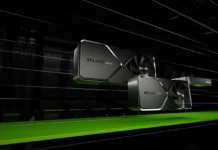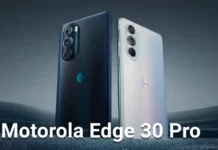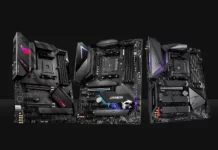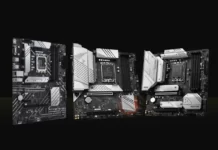Apple unveils M2 Pro and M2 Max: next-generation chips for next-level workflows
California’s Cupertino Apple unveiled the M2 Pro and M2 Max, two next-generation SoCs systems on a chip that push the boundaries of Apple silicon’s ground-breaking power efficiency.
A 12-core CPU, a 19-core GPU, and up to 32GB of quick unified memory are all possible with M2 Pro thanks to scaling up the M2 architecture. By adding a 38-core GPU, doubling the cooperative memory bandwidth, and supporting up to 96GB of unified memory, M2 Max expands on the features of M2 Pro. Thanks to its manufacturing performance per watt, it is the most powerful and power-efficient chip for a professional laptop globally. Both chips include improved personalized technologies, such as Apple’s potent media engine and a faster 16-core Neural Engine. While M2 Pro and M2 Max help advance ground-breaking capabilities and features of the 14-inch and 16-inch MacBook Pro, M2 Pro brings professional performance to the Mac Mini for the first time.
“Only Apple is producing SoCs like the M2 Max and Pro. According to Johny Srouji, senior vice president of Hardware Technologies at Apple, they offer amazing professional performance and industry-leading transmission capacity. “M2 Pro and M2 Max depict incredible progressions in Apple silicon,” according to CNET. “They have a CPU and GPU that are further effective, help for a bigger unified memory system, and a cutting-edge media engine.”


M2 Pro: Next-Generation Performance for Pro Workflows
The second-generation 5-nanometer process technology was used to create M2 Pro, which has 40 billion transistors, double that of M2 and nearly 20% more than M1 Pro. It has a unified bandwidth efficiency of 200GB/s, twice as fast as M2, and reduced suitable memory up to 32GB. With a maximum of eight increased cores and four high-efficiency cores per next-generation 10- or 12-core CPU, multithreaded CPU performance is up to 20% quicker than the 10-core CPU in the M1 Pro. Heavy workloads are handled by apps like Adobe Photoshop more quickly than ever, and assembling in Xcode is up to 2.5 times faster than on the quickest Intel-based MacBook Pro. In addition to having a larger L2 cache, the GPU in the M2 Pro can be designed with up to 19 cores, which is three more than the GPU in the M1 Pro. Games with console-quality graphics are now possible thanks to graphics bandwidths up to 30% faster than the M1 Pro.
M2 Max: The World’s Most Powerful and Efficient Chip for a Pro Laptop
The performance and potential of Apple silicon are pushed even further by M2 Max, which has 67 billion transistors—10 billion more than M1 Max and more than three times that of M2. With unified memory bandwidth of 400GB/s, which is twice as fast as M2 Pro and four times as quickly as M2, it can support up to 96GB of quick unified memory. Massive files open instantly, and switching between professional apps is rapid and seamless.
Similar to M2 Pro, M2 Max has a 12-core next-generation CPU. The GPU is even more effective, with up to 38 cores and an enormous L2 cache. More quickly than M1 Max, graphics can go up to 30% faster. The new MacBook Pro with M2 Max can handle graphical fidelity projects that trying-to-compete systems can’t even run, thanks to its 96GB of memory. 2 Whether connected to a power source or operating on battery capacity, the MacBook Pro with M2 Max offers excellent performance for everything from driving particular elements to having trained machine learning models to sew together gigapixel pictures. The world’s most powerful and effective chip for a professional laptop is called M2 Max.

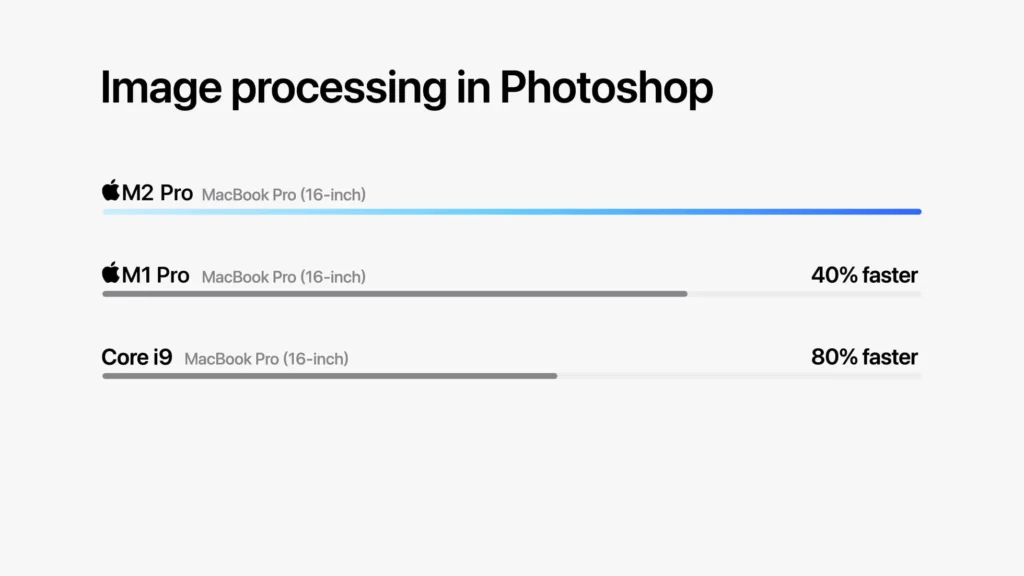
Extending Capabilities with Custom Technologies
New custom technologies are included in M2 Pro and M2 Max:
- Apple’s new 16-core, 15.8 trillion processes per second, up to 40% quicker than the prior generation, Neural Engine is a feature of both the M2 Pro and M2 Max.
- M2 Pro uses a powerful and efficient media engine that supports hardware-accelerated H.264, HEVC, and ProRes video encoding and decoding while using very little strength to playback different streams of 4K and 8K ProRes video. Two ProRes engines and two videos encoding machines in M2 Max enable up to two times quicker video encoding than in M2 Pro.
- In addition to using computational video to improve camera image quality, Apple’s most recent image signal processor improves noise reduction.
- Apple’s top-notch security includes a next-generation Secure Enclave, a crucial component.
macOS Ventura with M2 Pro and M2 Max
Because macOS is built for Apple silicon, users benefit from unmatched productivity and speed due to the combination of macOS Ventura and the most advanced chips currently available. More than 15,000 native apps and plug-ins are available for Mac computers running Apple silicon, enabling the full potential of M-series chips.
New features in macOS Ventura include Stage Manager and new FaceTime features like Continuity Camera and Handoff. Significant updates to Safari, Mail, Messages, Spotlight, and other applications are also included in macOS Ventura. These updates all improve responsiveness and performance on M2 Pro and M2 Max.
Apple Silicon and the Environment
The new MacBook Pro and Mac mini meet Apple’s strict energy efficiency requirements thanks to M2 Pro and M2 Max. With a battery life of up to 22 hours, the new MacBook Pro has the most extended battery life ever for a Mac, thanks to the power-efficient performance of Apple silicon. 3 As a result, it requires less time to be plugged in and uses less energy overall.
Apple intends to have a net-zero climate impact across the company by 2030, including all phases of product development and production supply chains. It is currently carbon neutral for its international corporate operations. As a result, every chip produced by Apple will be utterly carbon-neutral throughout the entire manufacturing process.
Footnotes
- Results are contrasted with those obtained using 16-inch MacBook Pro systems with Radeon Pro 5600M graphics, 2.4GHz 8-core Intel Core i9 processors, 64GB of RAM, and 8TB SSD.
- Apple performed screening in November and December 2022 using early production 16-inch MacBook Pro systems with the following specifications- 12-core CPU, 38-core GPU, 96GB of RAM, and 8TB SSD, in addition to a manufacturing Intel Core i9-based PC system with NVIDIA Quadro RTX 6000 graphics with 24GB GDDR6 and the most recent version of Microsoft Windows 11 Pro at the time of testing, and a production Intel Core i9-based PC system with NVIDIA GeForce. A scene requiring more than 40GB of graphics memory was used to test OTOY Octane X 2022.1 on preproduction 16-inch MacBook Pro systems and OTOY OctaneRender 2022.1 on Windows systems. Efficiency evaluations are carried out using particular computer systems and represent a rough representation of MacBook Pro’s performance.
- Apple tested preproduction 16-inch MacBook Pro systems with an Apple M2 Pro, a 12-core CPU, a 19-core GPU, 16GB of RAM, and a 1TB SSD in November and December 2022. When watching HD 1080p substance with the screen illumination set to eight clicks from the bottom, the Apple TV app runs a power usage test. According to use and set up, battery performance varies. See apple.com/batteries for more information.
Source: videocardz.com

